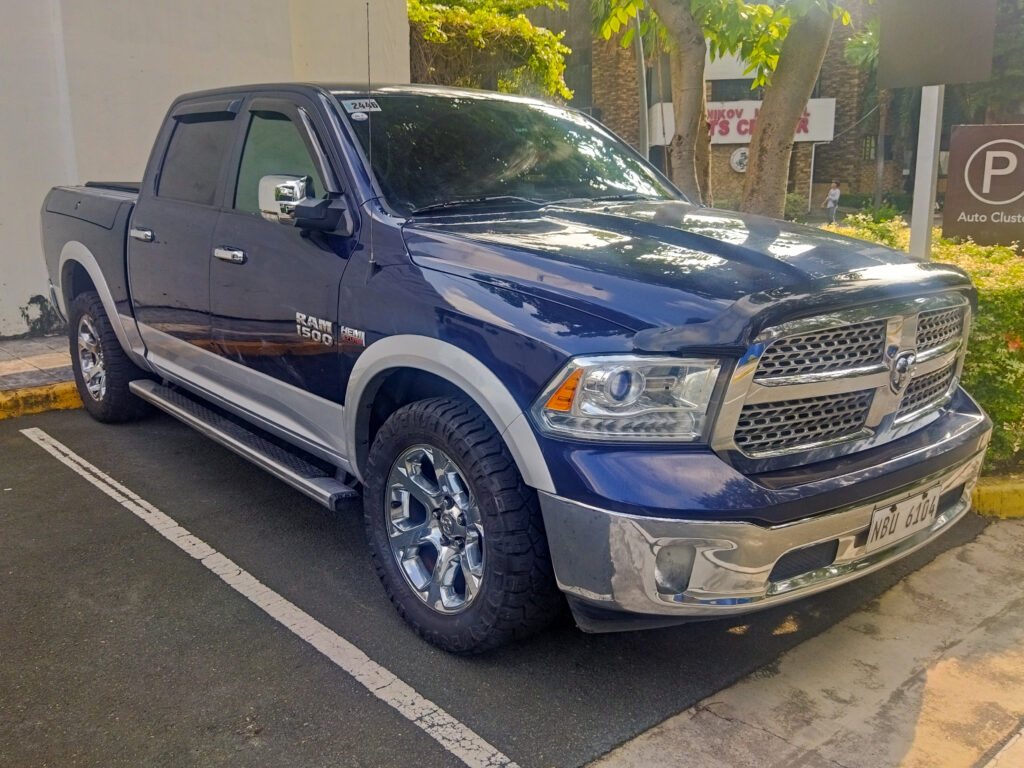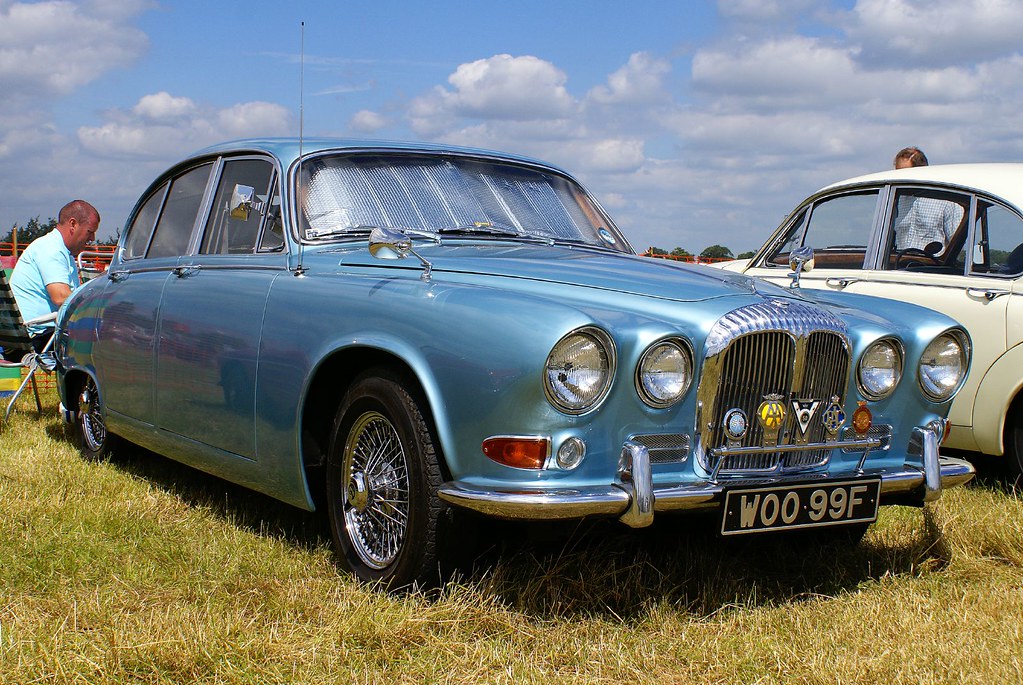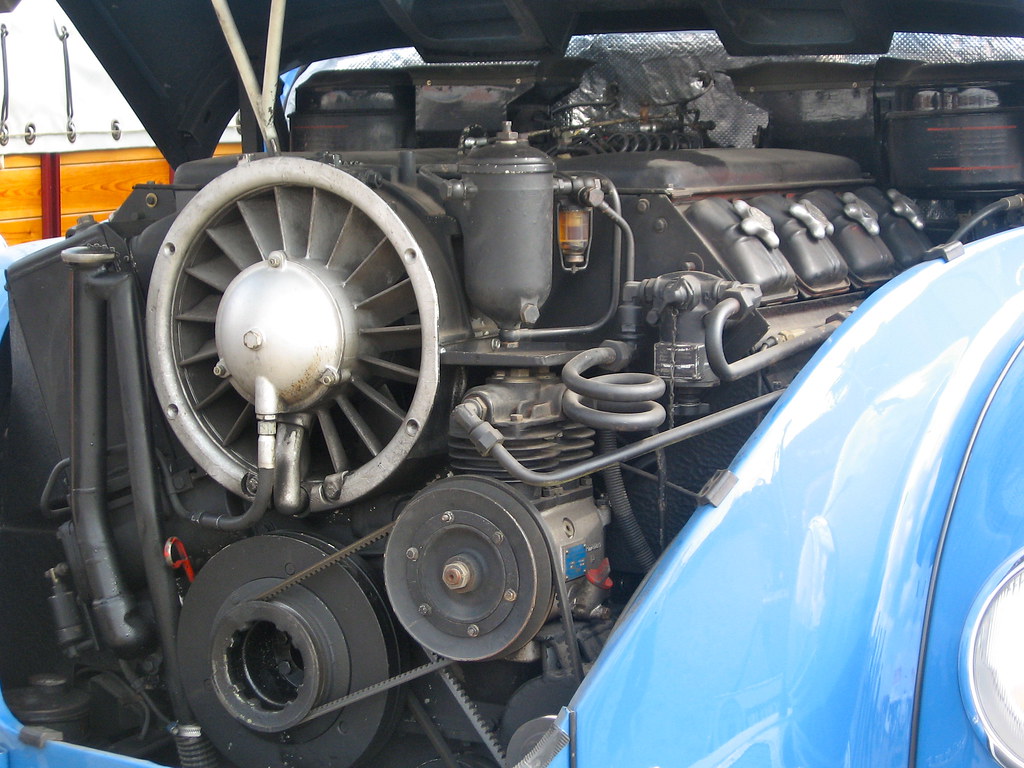
The V8 engine. Just the phrase itself evokes images of raw power, thrilling acceleration, and the unmistakable rumble that defines so much of automotive passion. It’s a powertrain configuration that holds a hallowed place in car culture, a symbol of engineering prowess that has powered everything from early 20th-century aircraft to modern hypercars. The United States, in particular, has become a true home for the V8, with American manufacturers creating an extensive lineup over the years—some truly legendary, others, well, not so much.
While the allure of a V8 is undeniable, promising an exhilarating driving experience that can tempt anyone behind the wheel into risky behavior, the reality is that not all V8 engines are synonymous with reliability or success. For every bulletproof small-block Chevy or robust Ford Coyote, there exists a cautionary tale, an engine design that, despite the best intentions, proved to be an inherent flaw from the factory floor. These are the engines that turned new car excitement into owner frustration, transforming a fresh set of wheels into a rolling disaster.
Today, we’re embarking on a journey through the annals of automotive engineering to shine a spotlight on some of the V8 engines that missed the mark. These aren’t just engines that required a simple hose fitting replacement; these are the powerplants whose fundamental design issues led to significant trouble, often necessitating major service or complete replacement. We’re talking about the kind of engine trouble that gets extremely frustrating, the kind that makes you wish you never signed the dotted line. So, buckle up, because we’re about to delve into the inherent flaws that defined these seven V8s worth avoiding.

1. **Triumph V8**Starting our list is a rather unfortunate offering from a now-defunct English automaker, Triumph. While Triumph found modest success with its small two-seater roadsters powered by equally small 4-cylinder engines, their venture into the V8 world with the Stag was, to put it mildly, a monumental misstep. Despite having access to the venerable Rover V8, management inexplicably decided to develop an all-new V8 from scratch—a decision that would haunt them.
Engineers, in a seemingly clever but ultimately disastrous move, essentially doubled their existing 4-cylinder design into a V configuration. The critical flaw emerged with the water pump placement. Instead of redesigning the cooling system for the V-engine, they retained the original 4-cylinder water pump’s high position. When the vertical block was tilted to form a V, this placed the water pump precariously high within the V, causing it to be starved of cooling water far too easily. Any minor leak meant the pump was the first component to go dry, leading directly to overheating and inevitable engine failure.
Compounding this cooling catastrophe was the fact that the water pump sat higher than the radiator cap itself, making it nearly impossible to completely fill the system. This contributed significantly to another debilitating issue: head stud failure. Half of the head studs were installed perpendicular to the block, as is common, but the other half were at an angle. When the engines inevitably overheated due these cooling deficiencies, the cylinder heads would stretch and warp. These angled studs, already under immense stress, then became virtually impossible to remove, turning routine head gasket repairs into engineering nightmares.
Many customers, faced with such insurmountable problems, opted to have their entire Triumph V8 engines replaced with more reliable Ford or Buick units rather than attempting to fix the inherently flawed Triumph design. These widespread and persistent issues—from the abysmal cooling system to the problematic head studs—effectively destroyed sales of the Stag and ensured that Triumph never again ventured into V8 engine production, a costly lesson learned in the harshest possible way.
Read more about: From Bold Blunders to Epic Flops: A Deep Dive into Automotive History’s Most Spectacular Design Failures
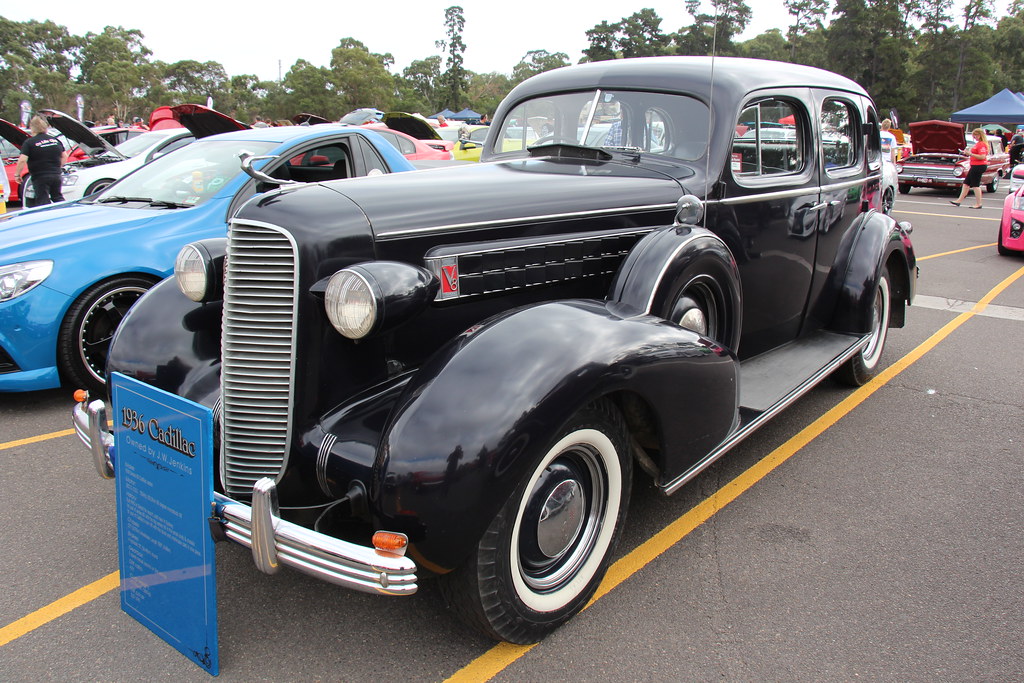
2. **Cadillac V8-6-4 (L62)**Cadillac, a pioneer of the V8 engine as early as 1914, holds a legendary place in American automotive history. However, by 1981, the automotive landscape had shifted dramatically. Cadillacs were growing increasingly large, and a significant fuel crisis left the luxury marque scrambling for ways to improve the efficiency of its oversized cars and engines. What followed was a technological gamble—a novel system designed to drastically reduce fuel consumption—that unfortunately ended up severely damaging Cadillac’s esteemed reputation for years to come.
The V8-6-4 engine was a 6.0-liter V8 equipped with an innovative new engine management system developed by Eaton Corporation. It utilized throttle body fuel injection and an array of sensors to monitor engine conditions. The ingenious concept was that under specific cruising conditions, a computer would activate solenoids on the rocker arms to hold certain valves open, effectively deactivating cylinders and stopping fuel injectors from feeding them. The goal was to transform a powerful V8 into a more fuel-efficient V6 or even a 4-cylinder while at highway speeds.
Regrettably, the ambition of the V8-6-4 far outstripped the technological capabilities of the era. The computer, built on 1970s technology, was simply too slow and unsophisticated to manage the rapid and precise transitions required for cylinder deactivation. This led to a system that frequently failed to work as intended, resulting in engines that ran terribly, suffering from hesitation, surging, and a general lack of refinement right from the outset. Cars often behaved as if they were constantly searching for the correct gear, creating a deeply unsatisfactory driving experience for Cadillac’s premium clientele.
Customers who bought new 1981 Cadillacs equipped with this system quickly brought them back to dealerships for service. The most common and effective solution offered by Cadillac technicians was to simply disable the cylinder deactivation system altogether, forcing the engine to run permanently in V8 mode. The V8-6-4 was a one-year wonder, swiftly discontinued for the 1982 model year, leaving a lasting negative impression. It took decades for computer technology to advance sufficiently before cylinder deactivation systems, now common and highly effective in modern engines, could be successfully implemented.
Car Model Information: 2021 Cadillac Escalade Sport Platinum
Name: V8 engine
Aka: Type 51, Monobloc, LaSalle, Northstar, Blackwing
Caption: A 331 series V8 from the 1950s
Manufacturer: Cadillac (automobile)
Production: 1914–present
Configuration: V8 engine
Valvetrain: Sidevalve,Overhead valve engine,DOHC
Block: Cast iron,Aluminium
Head: Cast iron,Aluminium
Fueltype: Gasoline
Fuelsystem: Rochester Products Division,Bendix Corporation,Throttle-body fuel injection,Digital fuel injection
Coolingsystem: Radiator (engine cooling)
Supercharger: intercooler
Turbocharger: Twin-turbo
Compression: 8.5:1, 10.0:1, 10.5:1
Displacement: {{cvt,244,cuin,L,1
Bore: {{cvt,3.125,in,mm
Stroke: {{cvt,3.875,in,mm
Power: cvt
Torque: cvt
Weight: cvt
Categories: Articles with short description, Cadillac engines, Short description is different from Wikidata, V8 engines
Summary: The term Cadillac V8 may refer to any of a number of V8 engines produced by the Cadillac division of General Motors since it pioneered the first such mass-produced engine in 1914.
Most commonly, such a reference is to one of the manufacturer’s most successful, best known, or longest-lived 90° V8 engine series. These include the pioneering overhead valve 331 cu in (5.4 L) cu in introduced in 1949, made in three displacements up to 390 cu in (6.4 L); a 390 cu in (6.4 L) introduced in 1963 that grew to 429 cu in (7.0 L); and a 472 cu in (7.7 L) introduced in 1968 and enlarged to 500 cu in (8.2 L). Also notable was the Northstar, which debuted in 1992 as a 4.6 litre, and was also produced in 4.4 L and 4.2 L versions.
When the Northstar engine series ended production in 2010, it became the last General Motors division to retain its own proprietary V8 design. This changed when Cadillac created the twin-turbo “Blackwing” engine in 2019.
Get more information about: Cadillac V8 engine
Buying a high-performing used car >>>
Brand: Cadillac Model: V8-6-4
Price: $62,988 Mileage: 69,523 mi.
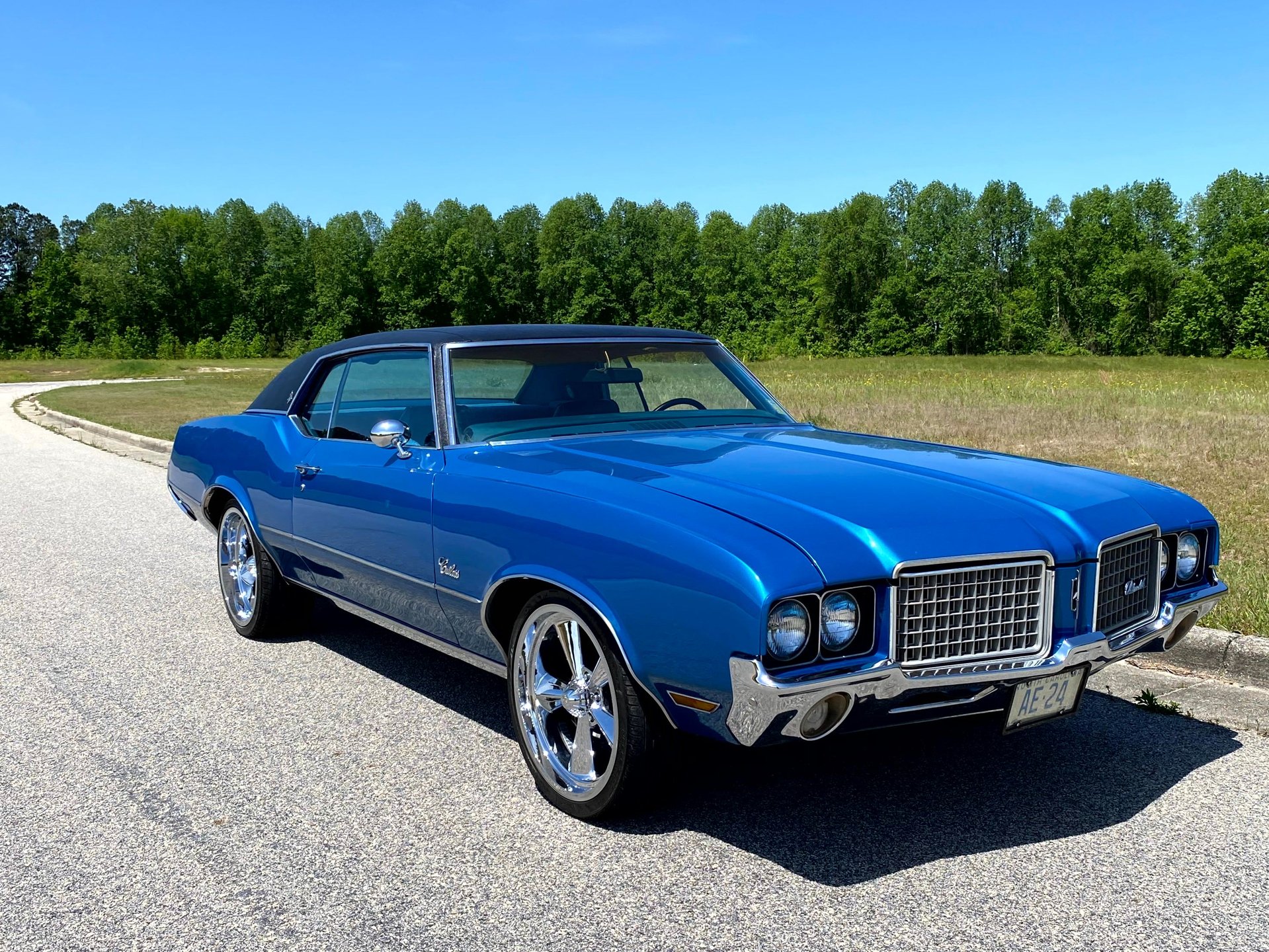
3. **Oldsmobile Diesel (LF9 V8)**Diesel engines have long been lauded for their fuel efficiency, but their adoption in American passenger cars has often been fraught with challenges. Oldsmobile’s attempt to introduce improved fuel efficiency into its line of large cars via a diesel V8, the LF9, stands as a particularly infamous example. Seeking to replicate the success of European diesel models, Oldsmobile decided to adapt its proven gasoline 350 V8 as the foundation for its new diesel powerplant, launched in 1978.
While sharing components and the same 350 cubic-inch displacement and head bolt pattern as its gasoline counterpart, the LF9 was not merely a gasoline engine with diesel heads. It featured a specially designed, reinforced engine block constructed from a stronger alloy, unique to the diesel application. Despite this effort at robust construction, the resulting engine fell dramatically short in performance and reliability, suffering from an abundance of design flaws that quickly became apparent and severely damaged consumer trust in diesel technology for decades.
One of the most critical issues stemmed from the cylinder heads. Despite the reinforced block, the heads were secured by the same 10-bolt pattern used on the gasoline version. This proved entirely insufficient for the significantly higher compression ratios inherent in diesel combustion. The bolts began to stretch under stress, leading to frequent and catastrophic blown head gaskets. Oldsmobile service departments nationwide were inundated with vehicles suffering critical engine failures, often requiring extensive, costly repairs.
Beyond the structural weaknesses, the LF9 was a profoundly disappointing performer. It produced a meager 120 horsepower from its 5.7-liter displacement—an extremely low figure for a V8 of that size—coupled with an obnoxious amount of noise and a constant plume of black smoke from the exhaust. Another glaring design flaw was the absence of a water separator, allowing moisture to infiltrate the fuel system and often destroy the fuel injection pump. The diesel calamity led to class-action lawsuits and contributed to the establishment of “lemon laws,” marking the LF9 as a stark lesson in rushed engineering and a major setback for diesel passenger cars in the U.S. market.

4. **Cadillac Northstar V8**When the Northstar V8 debuted in 1993, it was hailed as a sophisticated and powerful leap forward for Cadillac. As the brand’s first dual overhead cam engine, it was designed to help Cadillac catch up technologically with formidable European and Japanese luxury competitors. Initially a 4.6-liter V8 with port fuel injection and an all-aluminum block and heads, it was engineered primarily for front-wheel-drive cars, although later adapted for rear-wheel-drive applications like the SRX and XLR. It truly was a technological achievement, boasting many cutting-edge features for electronic engine management and delivering impressive power, initially 295 horsepower, climbing to 469 horsepower in performance variants.
However, despite its initial promise and advanced design, the Northstar V8 developed a reputation for a particularly severe and costly reliability issue: blown head gaskets. The problem lies with the torque-to-yield head bolts used for installation. These bolts are a single-use product, designed to stretch a specific amount during initial installation to provide optimal clamping force. Over time, however, these bolts have been notoriously known to continue stretching beyond their intended limits, losing their clamping force and allowing coolant to leak, leading to overheating and, ultimately, head gasket failure.
When a Northstar head gasket fails, the repair is far from simple or inexpensive. The only reliable way to rectify the issue is to replace the original head bolts, preferably with an aftermarket kit that installs thicker and stronger replacements, such as a SureGrip Stud Kit. This type of permanent fix is highly effective but comes with a significant caveat: it requires the entire engine to be removed from the vehicle. This labor-intensive process translates into a costly repair bill that often runs into thousands of dollars.
As these vehicles age and their market value depreciates, the cost of a Northstar head gasket repair becomes an increasingly unattractive proposition for owners. While a well-maintained Northstar could deliver a luxurious and powerful experience, the pervasive and expensive head gasket issue tarnished its legacy, making it a V8 that, while technologically advanced, ultimately suffered from a fundamental Achilles’ heel that frustrated countless Cadillac owners.
Car Model Information: 2020 Jeep Wrangler Sport
Name: Northstar engine
Caption: 1993–1999 4.6 L Northstar engine
Aka: Cadillac Northstar,Premium engine
Manufacturer: General Motors Corporation
Production: 1992–2011
Configuration: V8 engine
Block: Aluminum
Head: Aluminum
Predecessor: Cadillac High Technology engine
Successor: Cadillac twin-turbo V8
Valvetrain: DOHC,Multi-valve#Four valves
Supercharger: In 4.4 L versions
Turbocharger: Twin-turbo
Fueltype: Gasoline
Fuelsystem: Rochester Products Division,Sequential fuel injection
Coolingsystem: Radiator (engine cooling)
Compression: 9.0:1, 9.3:1, 10.0:1, 10.3:1, 10.5:1
Displacement: {{cvt,3473,cc,L cc cuin,1,order=out
Bore: cvt,cvt,cvt,cvt
Stroke: cvt,cvt
Power: cvt
Torque: cvt
Categories: 1992 introductions, All articles needing additional references, All articles with unsourced statements, Articles needing additional references from August 2017, Articles with short description
Summary: The Northstar engine is a family of high-performance 90° V engines produced by General Motors between 1993 and 2011. Regarded as GM’s most technically complex engine, the original double overhead cam, four valve per cylinder, aluminum block/aluminum head V8 design was developed by Oldsmobile R&D, but is most associated with Cadillac’s Northstar series.
Displacing 4.6 L (4,565 cc; 278.6 cu in) in its basic form, the direct family line transitioned to longitudinal and 4.4 L (4,371 cc; 266.7 cu in) supercharged versions. Variants were used at Oldsmobile (as the Aurora L47 V8 and “Shortstar” LX5 V6), as well as in several top-end 2000s Pontiacs and Buicks.
The related Northstar System was Cadillac’s trademarked name for a package of performance features introduced in mid-1992 that coupled the 4T80E transmission, a 100,000 mile service interval, road sensing suspension, variable power steering, and 4-wheel disc brakes to the Division’s high-output and high-torque Northstar engines.
GM ceased production of the Northstar in 2011. The final cars to receive it, the Cadillac DTS, Buick Lucerne, and Cadillac STS, rolled off the line in 2011. It was replaced by the GM LS small-block OHV engine, used in newer Cadillac V8 models like the CTS-V, marking a step back to a simpler, more reliable pushrod engine design. These LS V8 engines were the only V8 engines used by Cadillac for the next eight years, until the clean sheet Blackwing V8 was introduced in 2018 in the 2019 Cadillac CT6-V. A Cadillac-exclusive, it was discontinued after just two years in early 2020.
Get more information about: Northstar engine series
Buying a high-performing used car >>>
Brand: Cadillac Model: Northstar V8
Price: $25,000 Mileage: 54,707 mi.
Read more about: The Road to Ruin: 15 Major Engine Models That Crumbled Before 50,000 Miles

5. **Ford Triton 5.4**The phrase “Ford tough” has become synonymous with durability and rugged capability, particularly when discussing the brand’s expansive line of trucks. For millions of F-Series owners and commercial operators, the 5.4-liter Triton V8 engine, with its distinctive overhead valve architecture and three valves per cylinder, was widely regarded as the robust heart of their workhorses. This powerplant delivered a commendable blend of power and economy for its time, cementing its place under the hood of countless Ford pickups, Expedition SUVs, and E-Series vans for well over a decade. Many proud owners will eagerly show off odometers displaying hundreds of thousands of miles, swearing by the enduring strength and reliability of their Tritons, making its inclusion on a “worst engines” list often a point of spirited debate.
However, for a significant number of other Triton owners, the experience has been far less stellar, revealing a series of deeply frustrating and costly inherent design flaws. The most frequently cited issue, and arguably the most insidious, stems from a propensity for sludge buildup within the engine’s intricate oil passages. This accumulation directly impacts the cam phasers, which are absolutely vital components for the engine’s sophisticated variable valve timing system. When these phasers begin to malfunction due to inadequate lubrication or blockage, the engine often protests with a distinct ticking or knocking sound, particularly noticeable from the right side of the engine bay, soon followed by diagnostic trouble codes indicating a mismatch between cam and crank positions.
If these critical warning signs are ignored and the problem is left to fester, the consequences can range from drastically poor performance, reduced fuel efficiency, and a general lack of power to, in the most severe and unfortunate cases, catastrophic engine failure. Addressing these cam phaser issues is not a trivial repair. It often requires extensive labor, replacement of multiple components, and can easily involve repair bills climbing to $2,500 or more. This expense becomes a bitter pill to swallow, especially for owners who diligently followed recommended maintenance schedules, only to discover an inherent design susceptibility causing such a critical and debilitating fault.
As if the cam phaser debacle wasn’t enough, the Triton 5.4 also gained notoriety for a deeply frustrating spark plug design flaw that plagued different model years, presenting a recurring headache for owners and mechanics alike. In earlier engines produced before 2003, a significant design oversight meant there was an insufficient number of threads in the cylinder heads where the spark plugs were installed. This structural weakness, under the immense pressure of combustion, could literally cause spark plugs to be forcibly blown out of their seats, creating a terrifying and potentially dangerous experience for drivers, and necessitating complex and costly repairs to re-thread or even replace entire cylinder heads.
Compounding these issues, for models manufactured between 2004 and 2008, Ford introduced a new two-piece spark plug design. These plugs were notoriously prone to breaking during removal due to carbon buildup. Technicians attempting even routine maintenance frequently battled broken plug fragments deeply embedded in the cylinder head, turning a straightforward task into a time-consuming, specialized, and often expensive nightmare. This often required specialized extraction tools and significant labor to remove the stubborn remnants, adding hundreds or even thousands of dollars to service bills. These pervasive issues, despite the engine’s undeniable widespread use, have tarnished its long-term legacy and caused many potential buyers to steer clear, a sentiment emphatically echoed by popular mechanics who “recommend that nobody buy them at all” when considering used vehicles.
Car Model Information: 2020 Jeep Wrangler Sport
Name: Ford Modular Engine
Aka: unbulleted list
Caption: Ford Mustang SVT Cobra
Manufacturer: Ford Motor Company
Production: unbulleted list
Configuration: V8
Bore: unbulleted list
Stroke: unbulleted list
Displacement: unbulleted list
Power: cvt
Torque: cvt
Valvetrain: unbulleted indent list
Timing: Chain
Supercharger: Roots-type supercharger
Predecessor: unbulleted list
Categories: All articles needing additional references, All articles to be merged, All articles with unsourced statements, Articles needing additional references from October 2012, Articles to be merged from April 2025
Summary: The Ford Modular engine is an overhead camshaft (OHC) V8 and V10 gasoline-powered small block engine family introduced by Ford Motor Company in 1990 for the 1991 model year. The term “modular” applied to the setup of tooling and casting stations in the Windsor and Romeo engine manufacturing plants, not the engine itself.
The Modular engine family started with the 4.6 L in 1990 for the 1991 model year. The Modular engines are used in various Ford, Lincoln, and Mercury vehicles. Modular engines used in Ford trucks were marketed under the Triton name from 1997–2010 while the InTech name was used for a time at Lincoln and Mercury for vehicles equipped with DOHC versions of the engines. The engines were first produced at the Ford Romeo Engine Plant, then additional capacity was added at the Windsor Engine Plant in Windsor, Ontario.
Get more information about: Ford Modular engine
Buying a high-performing used car >>>
Brand: Ford Model: Triton 5.4
Price: $25,000 Mileage: 54,707 mi.
Read more about: The Road to Ruin: 15 Major Engine Models That Crumbled Before 50,000 Miles

6. **Chevrolet 262 Small Block V8**The Chevrolet small-block V8 is, without question, an automotive legend—a foundational powertrain that reshaped the industry and remains an enduring icon for enthusiasts and racers worldwide. Yet, within this celebrated lineage, not every iteration of the small-block family was destined for greatness or universal acclaim. The 262 cubic-inch (4.3-liter) small block, which made its debut in 1975, arrived on the scene during an exceptionally tumultuous era for American automakers. Strict new emissions standards were rapidly being enforced, and the lingering energy crisis of the early 1970s had sent fuel prices soaring, compelling engineers to fundamentally re-evaluate their priorities, shifting focus dramatically from raw, unbridled power towards efficiency and environmental compliance.
The 262 V8 was Chevrolet’s direct response and attempt to navigate this challenging new landscape. Its design brief aimed to offer improved fuel economy—a critical selling point in the mid-70s—while theoretically retaining the traditional power and alluring rumble historically associated with a V8 engine. Unfortunately, its ambitions far outstripped its actual capabilities, and it ultimately failed to deliver convincingly on either front. Rather than a revolutionary step forward, it quickly became evident that this engine represented little more than a stopgap measure, an effort to prolong the presence of V8s in the General Motors lineup during a period of intense uncertainty, yet it conspicuously failed to stand out as a performer of note.
This particular engine holds the unenviable distinction of being the smallest and, perhaps more critically, the least powerful of the entire first-generation Chevrolet small-block family. With a paltry 4.3-liter displacement, it produced a truly underwhelming 110 horsepower. To underscore just how anemic this output was, consider that this figure is significantly less than what many modern six-cylinder engines routinely produce today, let alone a V8. This meager power delivery, coupled with its inability to genuinely excel in fuel efficiency compared to more modern designs, effectively sealed the engine’s unfortunate fate and limited its appeal almost immediately.
The market’s reception to the 262 V8 was, predictably, quite cold, leading to an extraordinarily brief production run. It was introduced in 1975 and ceased production in late 1976, enduring barely two years on the factory lines. During its short and forgettable life, it found its way into only a handful of General Motors vehicles, specifically the compact Chevrolet Monza, the mid-size Chevrolet Nova, and the Pontiac Ventura. Its rapid discontinuation speaks volumes about its poor performance, the lack of enthusiasm from consumers, and its inability to meet the evolving demands of the automotive market.
By 1977, General Motors had already moved decisively past the ill-fated 262, replacing it with the more robust and capable 305 cubic-inch V8, which offered a much better and more commercially viable balance of power and efficiency for the changing times. The Chevrolet 262 small block serves as a potent historical reminder that even within a lineage of otherwise legendary engines, missteps can and do occur when engineering compromises are pushed too far in the name of regulatory compliance or perceived economy, leaving behind a legacy of underperformance and disappointment rather than innovation. It certainly wasn’t the kind of V8 that would ever send shivers down a gearhead’s spine for the right reasons.
Read more about: Unearthing a Giga-Hoard: 12 Incredible Barn Finds from the ‘Generous Collection’ That Are Stunning the Automotive World

7. **Chrysler Lean-Burn V8**As we continue our critical examination of the less-than-stellar V8 engines that have left their mark—or rather, their stain—on automotive history, a compelling and recurring theme becomes apparent: many of these problematic powerplants were born out of desperate, often hurried, attempts to adapt to new governmental regulations concerning emissions and fuel efficiency. While General Motors experimented with novel diesel V8s and significantly downsized gasoline engines, Chrysler took a distinctly different, and ultimately ill-fated, technological path. Their solution involved a large, traditional gasoline-powered V8 augmented with what they ambitiously christened “lean-burn” technology, a system that promised much but delivered little in long-term reliability.
Introduced with significant fanfare in 1976, the lean-burn engine featured an early, pioneering version of computerized spark control. This was, at the time, a genuinely significant technological leap forward, especially when one considers that this very same year marked the public debut of the first Apple computer. Chrysler’s venture into sophisticated electronic engine management was ambitious, aiming for a precision that had previously been unattainable. The underlying idea was fundamentally sound: precise computer control could meticulously optimize the air-fuel mixture to run significantly leaner, thereby enhancing efficiency and critically reducing emissions without the inherent complexity and cost of a catalytic converter.
In certain, albeit limited, respects, this innovation initially showed a glimmer of promise, suggesting that the concept held merit. The lean-burn system did, for a time, genuinely help Chrysler meet the increasingly stringent emissions requirements of the era, which was no small feat. A notable 1976 Road & Track test, for instance, highlighted a seemingly impressive achievement: a lean-burn V8-equipped Chrysler Cordoba achieved a respectable 2.5 more miles per gallon than a comparable, traditional Hemi-powered Dodge Charger. This quantitative benefit in fuel economy suggested that the core concept indeed had potential if only the subsequent execution had truly matched the ambitious vision.
However, a critical and ultimately fatal design flaw severely undermined any progress the lean-burn system made, rendering it a long-term liability rather than an asset: Chrysler’s engineers made the perplexing decision to mount the engine control computer directly on the air cleaner housing. This seemingly innocuous placement exposed the sophisticated electronic brain of the engine to a relentless barrage of constant and extreme heat, pervasive vibration, and unavoidable moisture from the harsh environment of the engine bay. Such brutal operating conditions were simply intolerable for the nascent and delicate computer technology of the 1970s, leading inevitably and frequently to the premature and frustrating failure of the control unit itself, sabotaging the entire system.
This incredibly poor choice of placement consequently rendered the entire lean-burn system notoriously unreliable and prone to breakdown. The V8 suffered from frequent and exasperating issues, including persistent vacuum leaks, which further confounded the engine’s precise air-fuel mixture, and an array of faulty sensors that collectively prevented the computer from accurately managing the engine’s parameters. This resulted in erratic and unpredictable performance, extremely poor drivability characterized by surging and hesitation, and a deeply frustrating ownership experience. Ultimately, the inherent unreliability caused by its flawed design and component placement completely overshadowed any theoretical gains. It would take the advent of far more robust and truly sophisticated electronic fuel injection systems and advanced engine control technologies, many years later, to genuinely achieve the efficiency and emissions goals that Chrysler’s ambitious, but ultimately compromised, lean-burn V8 had initially and unsuccessfully aimed for.
Read more about: Beyond the Stage: An Exclusive Look Inside Jay Leno’s Multi-Million Dollar Automotive Sanctuary
As we close the hood on this exploration of V8 engines that missed the mark, it becomes abundantly clear that even the most revered automotive configurations are not immune to critical design flaws and engineering missteps. From the noble ambitions of cylinder deactivation to the promise of improved fuel economy, and from robust truck powerplants to legendary small-block variants, the journey of the V8 is paved with both triumphs and cautionary tales. These engines serve as powerful lessons in the complexities of automotive engineering, highlighting how crucial every detail—from water pump placement to head bolt design and even computer housing—is in defining an engine’s ultimate legacy. While the roar of a V8 still stirs the soul, this list reminds us that not all growls are created equal, and some are best left unheard.


